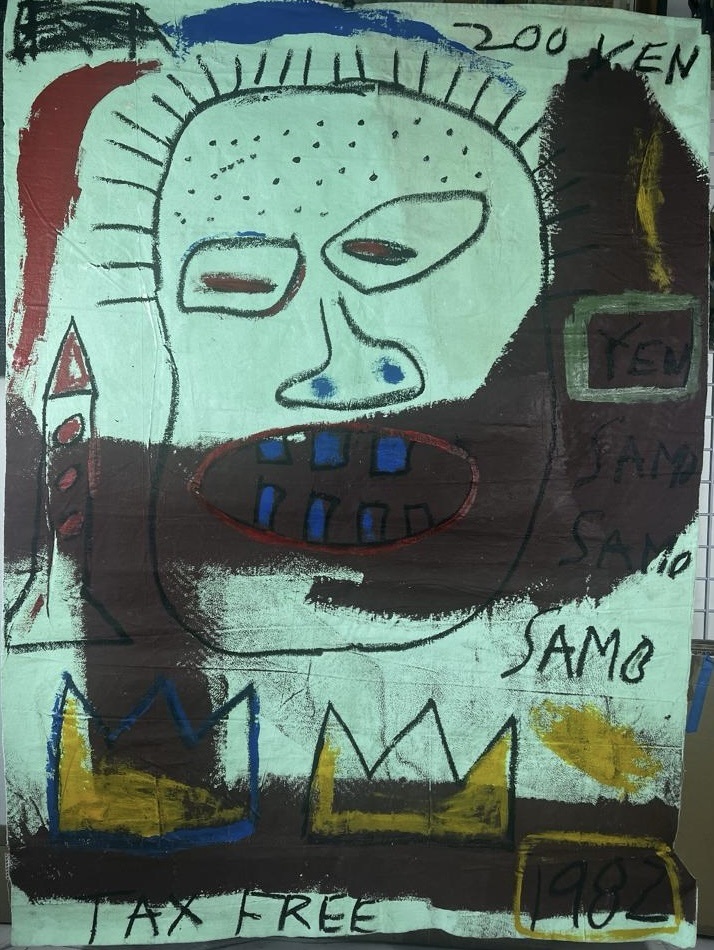About The Painting
Wide-eyed, slack-jawed, spiked hair standing on end, the roughly drawn subject screams at us from the canvas. Incisive, rapid lines lend an urgency to the image. A large swathe of brown paint obscures and gags the mouth, hindering speech. Next to the figure is a rocket, adding to the violence. Here and there, words are scribbled, also hastily. Some are repeated, others crossed out, suggesting thoughts that bubble to the surface of a mind that is racing: "200 YEN", "TAX FREE" , "SAMO". These words, in black capital letters on a pale green background that accentuates their visibility, speak of the business of art, against which the subject appears to be foaming at the mouth, teeth bared. Below are two of Basquiat's signature three-pointed crowns, drawn in black and filled in with yellow. Here we have the clash of two modes of operation that proceed from two dynamics, painting, and writing. The large brush strokes with their blocks of opaque acrylic color contrast with the black oil stick lines that leave the texture of the canvas visible.
Basquiat 200 Yen work speaks to our senses as much as our intellect. While his messages are subliminal when expressed in shape and color, they are more precise in the form of words. Money is omnipresent in his work, and here the Japanese Yen is mentioned twice. The "200" refers to the currency's value against the dollar in 1982. Basquiat is talking to us about capitalism, US hegemony, the domination of the market and trade wars, summed up by the laconic "TAX FREE" scrawled on the canvas. The more cryptic "SAMO", the abbreviation of "Same Old Shit", which appears three times, was Basquiat's monicker when he was still an anonymous graffiti artist in New York. From that time, he has retained the urgency, violence, adrenalin, and a vandalistic touch. The surface of the canvas is an extension of the city walls he used to spray paint on. Basquiat brings the underground into the world of high art, where it will remain.
Born in Brooklyn to a bourgeois family of Haitian and Puerto Rican origin, Jean-Michel Basquiat was a precocious child who gave up formal education at 16 to join New York's underground as a graffiti artist. Using the tag SAMO©, he painted on the walls in New York with Al Diaz (1959-) before he painted on canvas. His expressionistic, radical work, which is infused with a call for the recognition of oppressed groups, denounces racism, colonization and capitalist domination. In the late 1970s, Basquiat became a leading figure in the East Village. He was friends with Keith Haring (1958-1990) and he met Andy Warhol (1928-1987), with whom he began an artistic collaboration.
His career took off in earnest in 1981. Artforum and The Village Voice interviewed him and wrote articles about him and soon, art dealers and gallery owners were fighting over him, among them Annina Nosei, Larry Gagosian, Bruno Bischofberger and Tony Shakrazi. His works soon began to be shown in America's greatest museums, including the MOMA. Basquiat's addition to drugs and alcohol led to his death on 12 August 1988, at the age of 27. In 2017, one of his paintings, Untitled, 1982, featuring a giant black skull-like form, was sold at auction for $110.5m, setting the record for a work by an American artist.





Comments